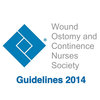Evidence-Based Wound Care Guidelines and Fecal Ostomy Best Practice
Detailed App Info:
Application Description
View the differential assessment algorithm or image library to help you assess patients. Read the quick-reference guide, then view details with extended guidelines and tools.
The app includes:
Pressure Ulcers: This guideline provides consistent, evidence-based information about pressure ulcers, as well as an overview covering the background, significance and physiological aspects of pressure ulcers. Also presented is the etiology of pressure ulcers, overall management goals, and recommendations for prevention and treatment. Guideline includes an algorithm to determine wound etiology, a comprehensive glossary, and several appendices with tools for managing pressure ulcers.
Fecal Ostomy: This clinical best practice includes types of ostomies, stoma site marking, patient education, pouching options and management, and quality of life for patients. This clinical practice guideline is intended for use by physicians, nurses, therapists and other health care professionals who work with people who will undergo or have undergone a procedure that results in a fecal ostomy.
LEAD: Based on the latest research evidence, this guideline supports clinical practice to achieve improved, cost-effective patient outcomes and a compilation of recommendations, along with a level of evidence rating, to assess and manage patients with/or at risk for wounds due to LEAD.
LEND: This guideline will promote evidence-based assessment, prevention, and management strategies for neuropathic patients, including the millions of patients with diabetes and a myriad of other primary diagnoses. It also provides a strong impetus for education, offers a framework for future research, and supports evidence-based clinical practice to improve quality of life for patients and cost effective outcomes for health systems.
LEVD: Updated in 2011, these evidence-based recommendations for prevention and treatment in this growing population are geared toward health care professionals who direct, provide, or specialize in wound care for patients with LEVD.
Requirements
Your mobile device must have at least 11.94 MB of space to download and install Evidence-Based Wound Care Guidelines and Fecal Ostomy Best Practice app. Evidence-Based Wound Care Guidelines and Fecal Ostomy Best Practice is available on iTunes for $
If you have any problems with installation or in-app purchase, found bugs, questions, comments about this application, you can visit the official website of Wound, Ostomy and Continence Nurses Society (WOCN) Wound, Ostomy & Continence Nurses Society at http://redi-reference.com/support.html.
Copyright © 2014 Wound, Ostomy and Continence Nurses Society





